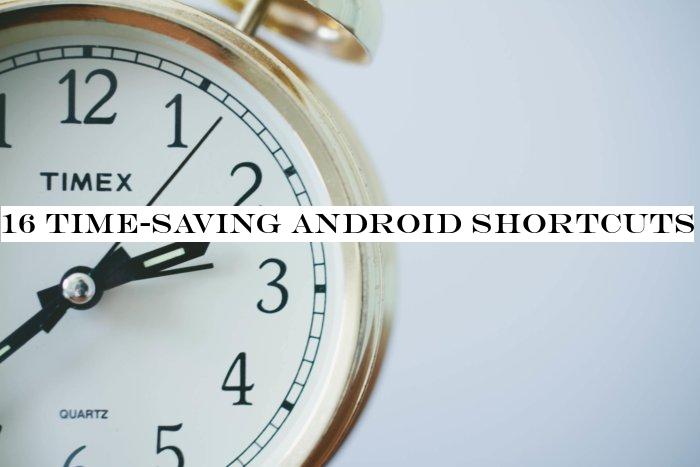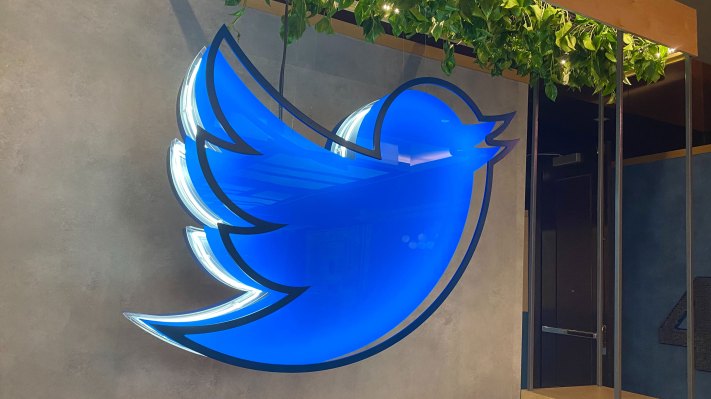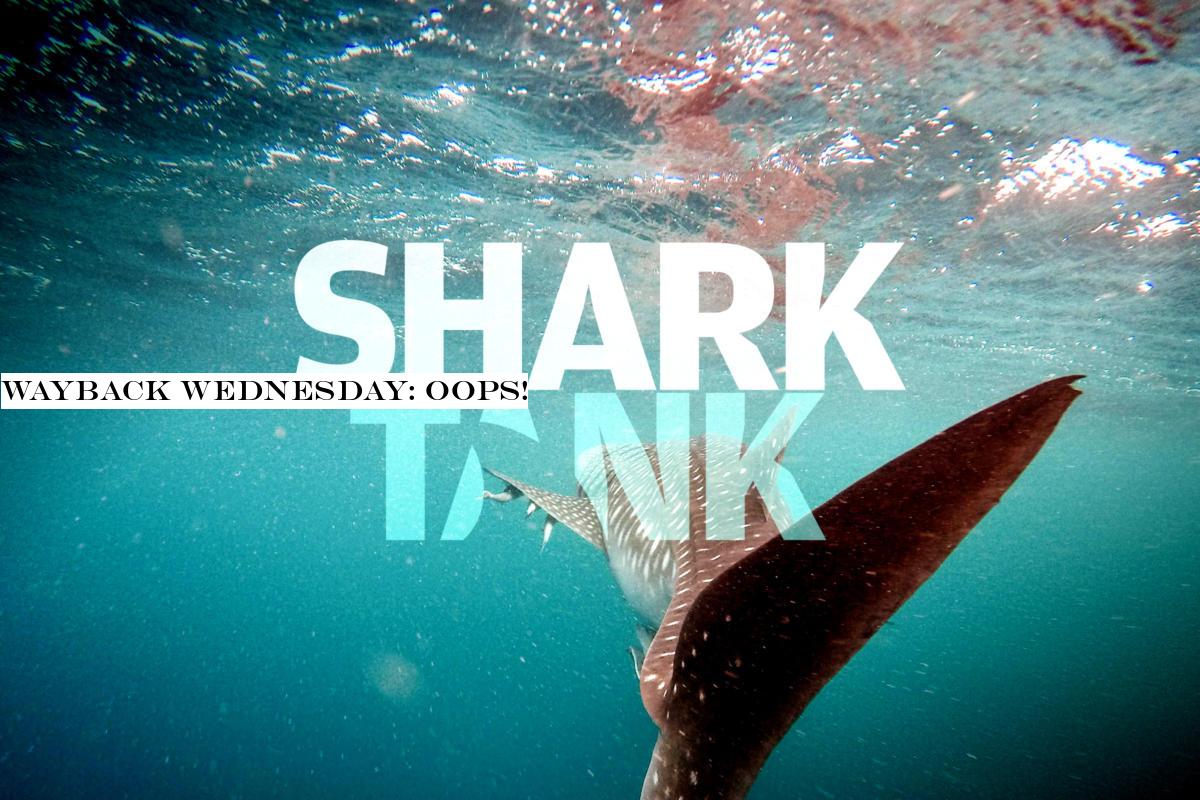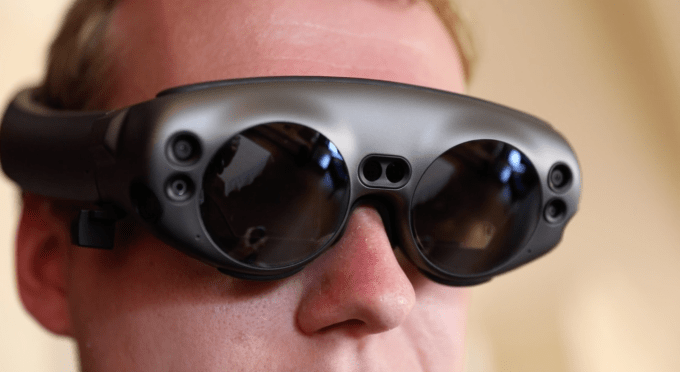Music
Trailers
DailyVideos
India
Pakistan
Afghanistan
Bangladesh
Srilanka
Nepal
Thailand
StockMarket
Business
Technology
Startup
Trending Videos
Coupons
Football
Search
Download App in Playstore
Download App
Best Collections
Technology

When it comes to modern technology, every second counts.
It may sound silly, but it's true: A second is the difference between an interaction on your phone feeling instantaneous and feeling just a touch too slow. And particularly with how frequently we tend to repeat common mobile tech tasks — switching apps, opening menus, firing up our cameras, and so on — all of those seconds can add up fast.
The good news: Android has no shortage of hidden shortcuts that can help you save time and get stuff done more efficiently. All you have to do is learn how to use 'em.
Ready?
1. Snap between apps
Cut out delays in toggling between apps by putting Android's semi-secret fast-snap function to use: If your device runs Android 10 and has gesture navigation enabled, flick your finger toward the right along the bottom edge of the screen to snap back to your most recently used app.
To read this article in full, please click here
- Details
- Category: Technology Today
Read more: 16 time-saving Android shortcuts
Write comment (96 Comments)
After &strongly encouraging& it earlier this month, Twitter said today that working from home is now mandatory for all employees around the world due to COVID-19 concerns. In announcement, the company said &we understand this is an unprecedented step, but these are unprecedented times.&
The World Health Organization officially declared COVID-19 a pandemic yesterday. There are now about 118,000 reported cases in 114 countries, with the global death roll passing 4,000.
The company said it will help all employees, including hourly workers and contractors, cover expenses for setting up home offices. Contractors, vendors and hourly workers who cannot work from home, will continue to be paid for their standard working hours while the work-from-home policy is in effect. Twitter also said it will cover additional daycare expenses parents may have if their usual daycares close due to COVID-19.
TwitterInclusion and Diversity team will also hold a virtual &#FlockTalk,& an employee support program to discuss how &news around COVID-19 is impacting people in number of different ways—from schools and offices being closed, to serious health concerns, to racism towards communities.&
On March 2, Twitter announced that it was strongly encouraging working from home, and making it mandatory for employees in Hong Kong, Japan and South Korea, due partly to government restrictions. In todayannouncement, the company said it is expanding its policy worldwide because &our top priority remains the health and safety of our Tweeps, and we also have a responsibility to support our communities, those who are vulnerable, and the healthcare providers who are on the front lines of this pandemic.&
Other large tech companies, including Amazon, Box and Lyft, have implemented work from home recommendations or policies in response to COVID-19, while major events like MWC and E3 have been cancelled or moved partially online.
- Details
- Category: Technology Today

Email goes out to all supervisors, asking for feedback on an hourly employee whoapplying for a promotion to management, reports a pilot fish in the loop.
&The e-mail, as always, had ‘DO NOT REPLY TO ALL!& prominently displayed in its message body,& fish says.
&Well, one supervisor replied to all, criticizing the way the employee dressed in great detail.
&This supervisor, for some reason, also cc:&d department secretaries on the email.
&And one of the department secretaries was the employee in question.
&Awkward moment &
Sharky won&t embarrass you. Send me your true tales of IT life atThis email address is being protected from spambots. You need JavaScript enabled to view it., and I&ll file off the identifying information. You can also subscribe to the Daily Shark Newsletter.
To read this article in full, please click here
- Details
- Category: Technology Today
Read more: Wayback Wednesday: Oops!
Write comment (100 Comments)In a Wednesday evening address from the Oval Office, President Donald Trump announced that the U.S. would issue a thirty-day travel ban for travel from the European Union, a ban that would exclude the United Kingdom and has a number of notable exceptions. He is also looking to Congress, the Small Business Administration and the Treasury Department to take steps to stimulate the U.S. economy.
The steps are the latest effort by the government to tamp down on the spread of COVID-19.
&We will be suspending all travel from Europe to the United States for the next 30 days,& President Trump said, adding &the new rules will go into effect Friday at midnight. These restrictions will be adjusted subject to conditions on the ground. There will be exemptions for Americans who have undergone appropriate screenings. And these prohibitions will not only apply to the tremendous amount of trade and cargo, but various other things as we get approval.&
The Presidentaddress painted a picture of a far more sweeping executive order though than the one he signed earlier today. That order is far more narrow in scope, according to a statement from the Department of Homeland Security.
The ban explicitly states &This does not apply to legal permanent residents, (generally) immediate family members of U.S. citizens, and other individuals who are identified in the proclamation,& which does not appear to coincide with the total ban implied by the Presidentphrasing on live television.
Also in contradiction to the Oval Office address, goods and cargo will not be subject to the ban.
The president then turned from halting the spread of COVID-19 to bolstering the American economy, which has been battered in recent weeks from fears of aftershocks from coronavirus.
The President said that he would be authorizing the Small Business Administration to issue some $50 billion in loans to compensate businesses whose income is impacted by efforts to respond to the coronavirus outbreak, funding subject to Congressional approval.That move should allow for more companies to compensate workers for time spent in quarantine if they, or their family members, are ill.
The President also said, &Using emergency authority, I will be instructing the Treasury Department to defer tax payments, without interest or penalties, for certain individuals and businesses [that] are negatively impacted.& He continued, &This action will provide more than $200 billion of additional liquidity to the economy.&
President Trump issued a call to Congress to eliminate payroll taxes as another step to cushion the economic blow of a more aggressive response to the COVID-19 outbreak in the U.S.
Finally, the address alluded to an agreement between the White House and U.S. insurers that would have them &waive all [fees for] coronavirus treatments,& but according to a spokesperson for the insurance lobby, the copayment waiver is only &For testing. Not for treatment.&
If the Presidentaddress was intended to calm the tumult emanating from stock markets over the coronavirus outbreak, it seems to be having the opposite effect. Futures for the Dow Jones Industrial Average were down 1,114 points or 4.74% in pre-market trading. The Nasdaq was down 400 points or 5%.
And the unprecedented steps followed an already calamitous day on Wall Street and the wider world as the World Health Organization officially declared the COVID-19 outbreak a pandemic and stocks again suffered massive losses in trading.
As notable as the European travel ban is (and as inexplicable as the exclusion of the U.K. may be), the Presidentspeech drew criticism for the things it did not include. Nicholas Burns, the former U.S. Under Secretary of State for Political Affairs under PresidentGeorge W. Bush, wrote, &COVID-19 is not a ‘foreign virus&. It is a global threat that can only be resolved by working with, and not against, all the other nations of the world.&
And while the President issued assurances that the government was well-prepared to meet the challenge that the spread of COVID-19 poses, recent reporting indicates that critical components for the COVID-19 test are facing shortages and therestill not enough testing being done.
Johns Hopkins University is currently tracking 1,281 people who have been infected with the disease in the U.S. and that number is likely to increase as more tests are conducted. So far, 36 people in the U.S. have died of the illness.
What would help would be greater transparency and open reporting on not just the number of cases that have been confirmed, but the number of tests conducted in the U.S. However, reporting around the spread of the disease has been limited since communications were centralized in the Office of the Vice President.
Apparently, the opacity on coronavirus information has been by design. Since mid-January, the White House has designated that briefings on the coronavirus outbreak be classified, a decision which has limited the ability of experts to attend inter-agency meetings, according to a report in Reuters.
&We had some very critical people who did not have security clearances who could not go,& one official told the newswire service. &These should not be classified meetings. It was unnecessary.&
Apparently the classification was made at the insistence of the White House and the lack of free-flowing information may have hindered the ability of various agencies to effectively respond to the spread of COVID-19 earlier.
When the disease was first identified by a doctor in China, the countryCommunist government suppressed information and allowed for a citywide outbreak, which eventually became the global pandemic the world is now facing. It appears that the U.S. is on its way to making the same mistakes.
But even as the President continues to issue assurances, more and more aspects of American life are being disrupted. Nearly simultaneous with the presidentspeech, the National Basketball Association canceled the remainder of its season after a player for the Utah Jazz tested positive for the coronavirus, while the NCAA is going ahead with its annual championship tournaments to stadiums emptied of fans. Large gatherings are being called off in Washington State, California, and New York as mitigation measures to level the spread of the disease are put into place.
Still, the person in the highest position in the government to coordinate an aggressive response remains confident. &The virus will not have a chance against us. No nation is more prepared, more resilient than the United States,& the President said.
- Details
- Category: Technology Today

American stock markets plunged on Wednesday, after the World Health Organization officially declared the spread of COVID-19 a pandemic. In Asia, meanwhile, almost all the major stock indexes were also trading lower the morning after the WHOannouncement, with the Asia Dow Index down 4% by midday.
Morning trading in East Asian markets was ongoing by the time President Donald Trump made an address in which he announced a 30-day travel ban from the European Union to the United States.
In Japan, the benchmark index, the Nikkei 225, had fallen 3.6% as of mid-afternoon. The Nikkei Jasdaq, seen as an index for smaller companies and startups, was down 3.4%. Both recovered slightly in the afternoon after a morning drop.
The Hong Kong Stock Exchange fell 3.6% by early afternoon, while the Shanghai Stock Exchange composite index was down 1.6%.
The FTSE Straits Times Index, the benchmark index for Singapore, fell 3.7% by early afternoon, while TaiwanTSEC was down 4%.
The Mumbai Sensex was down 6.8% as of late morning trading in India.
- Details
- Category: Technology Today
Read more: Asian stock markets fall as COVID-19 is declared a pandemic
Write comment (97 Comments)Augmented reality headset maker Magic Leap has struggled with the laws of physics and failed to get to market. Now itseeking an acquirer, but talks with Facebook and medical goods giant Johnson - Johnson led nowhere according to a new report from BloombergEd Hammond.
After raising over $2 billion and being valued between $6 billion and $8 billion back when it still had momentum, Hammond writes that &Magic Leap could fetch more than$10 billion if it pursues a sale& according to his sources. That price seems ridiculous. Itthe kind of number a prideful company might strategically leak in hopes of drumming up acquisition interest, even at a lower price.

Startups have been getting their valuations chopped when they go public. The whole economy is hurting due to coronavirus. Augmented Reality seems less interesting than virtual reality with people avoiding public places. Getting people to strap used AR hardware to their face for demos seems like a tough sell for the forseeable future.
No one has proven a killer consumer use case for augmented reality eyewear that warrants an expensive and awkward-to-wear gadget. Our phones can already deliver plenty of ARvalue while letting you take selfies and do video chat that headsets can&t. My experiences with Magic Leap at Sundance Film Festival last year were laughably disappointing, with its clunky hardware, ghostly projections, and narrow field of view.

Apple and Facebook are throwing the enduring profits of iPhones and the News Feed into building a better consumer headset. Snapchat has built intermediary glasses since CEO Evan Spiegel thinks it will be a decade before AR headsets see mainstream adoption. AR rivals like Microsoft have better enterprise experience, connections, and distribution. Enterprise AR startup Daqri crashed and burned.
Magic LeapCEO said he wanted to sell 1 million of its $2300 headset in its first year, then projected it would sell 100,000 headsets, but only moved 6,000 in the first six months, according to a daming report from The InformationAlex Heath. Alphabet CEO Sundar Pichai left Magic Leapboard despite Google leading a $514 million funding round for the startup in 2014. Business InsiderSteven Tweedie and Kevin Webb revealed CFO Scott Henry and SVP of creative strategy John Gaeta bailed in November. The company suffered dozens of layoffs. It lost a $500 million contract to Microsoft last year. The CEOs of Apple, Google, and Facebook visited Magic Leap headquarters in 2016 to explore an acquisition deal, but no offers emerged.

Is AR eyewear part of the future? Almost surely. And is this startup valuable? Certainly somewhat. But Magic Leap may prove to be too little too early for a company burning cash by the hundreds of millions in a market newly fixated on efficiency. A $10 billion price tag would require one of the worldbiggest corporations to believe Magic Leap has irreplicable talent and technology that will earn them a fortune in the somewhat distant future.
The fact that Facebook, which does not shy from tall acquisition prices, didn&t want to buy Magic Leap is telling. This isn&t a product with hundreds of millions of users or fast-ramping revenue. Ita gamble on vision and timing that looks to be coming up snake eyes. Itunclear when the startup would ever be able to deliver on its renderings of flying whales and living room dinosaurs in a form factor people actually want to wear.

One of Magic Leapearly renderings of what it could supposedly do
With all their money and plenty of time before widespread demand for AR headsets materializes, potential acquirers could likely hire away the talent and make up the development time in cheaper ways than buying Magic Leap. If someone acquires them for too much, it feels like a write-off waiting to happen.
- Details
- Category: Technology Today
Read more: Desperate to exit, a $10B price tag for Magic Leap is crazy
Write comment (95 Comments)Page 1238 of 1416

 14
14





